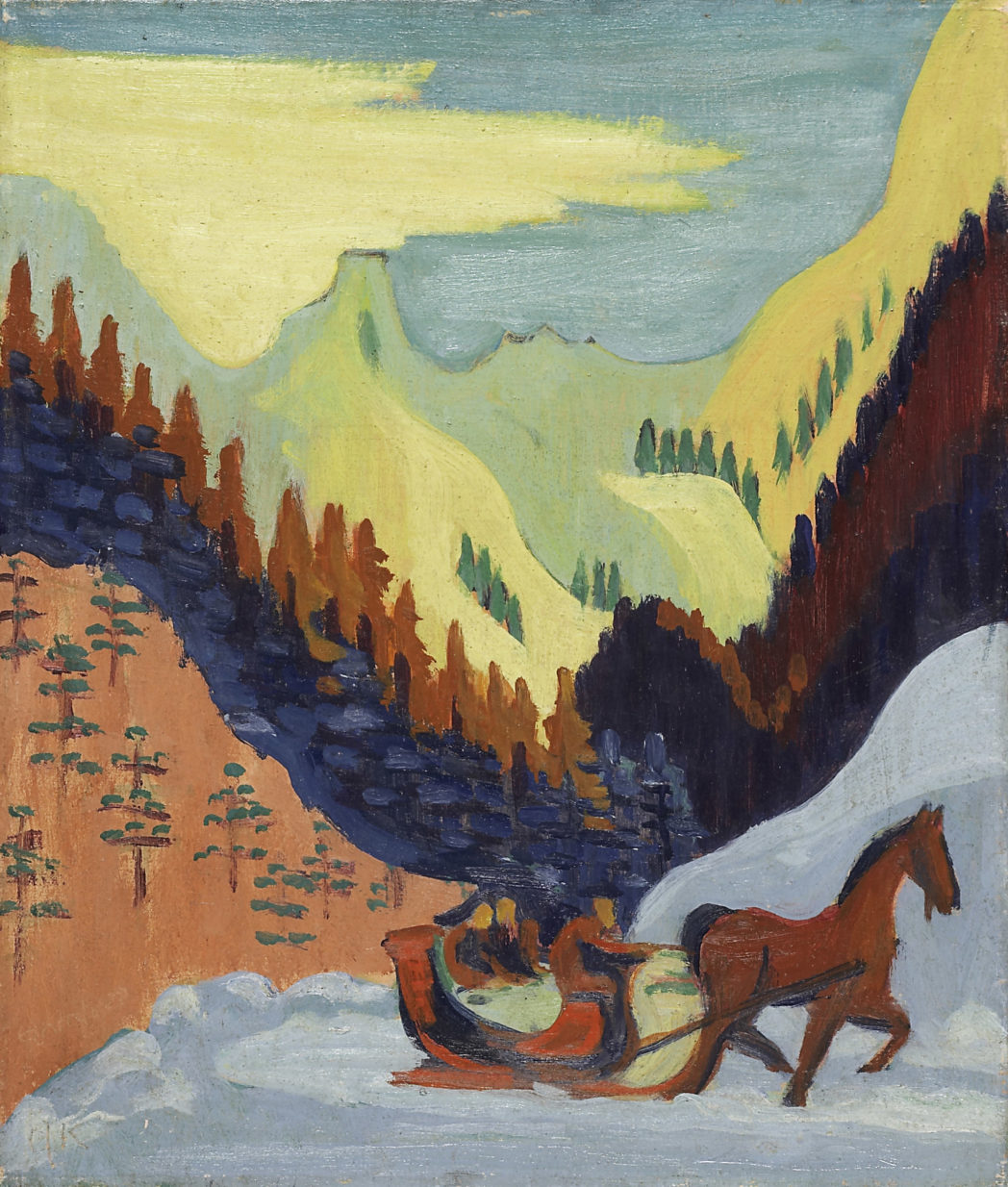
Conservators at the Städel Museum in Frankfurt have discovered a previously unknown work by Ernst Ludwig Kirchner concealed beneath the canvas of Schlittenfahrt im Schnee (1927-29) during a technical inspection. Kirchner’s earlier work Szene im Café, which was painted around 1926, was found stretched on the same frame, but hidden from view.
The newly discovered canvas was created around the time that the German expressionist lived in the Swiss town of Davos. During this period his style changed significantly, diverging from his previous jagged, nervy brushstrokes characterizing his early work, to his later two-dimensional, delineated style.
The painting was discovered stretched over another. Photo: courtesy Städel Museum, Frankfurt.
“The newly discovered Szene im Café enriches the Städel’s collection of Expressionist works and paintings, and illustrates the stylistic development of Kirchner’s oeuvre in the 1920s,” Städel director Philipp Demandt said in a statement. “Works by the Brücke group artists and especially works by Kirchner make up the core of our collection of modern art. This lucky discovery further expands this focus.”
Ernst Ludwig Kirchner Szene im Café (ca. 1926). Photo: courtesy Städel Museum, Frankfurt.
Although the discovery comes as a surprise, it isn’t the first time that a Kirchner painting has been discovered on the same frame as another work of art.
In February 1918, Kirchner wrote a letter to the collector Carl Hagemann asking him to check for forgotten works underneath two paintings he bought from him. “It has happened frequently that I stretched three or four canvasses on top of each other when I ran out of frames,” the artist wrote.
As such, the artist’s undiscovered works were previously found underneath other canvases in 1969 and 1970 at the Bündner Kunstmuseum in Chur, Switzerland.
“So far we have only a few representative paintings from Kirchner’s late work. The discovery of Szene im Café is a significant addition to our Expressionist collection,” said Felix Krämer, head of modern art at the Städel.
Both works will go on display after an in-depth analysis as part of the Städel’s exhibition, “Analysis, Discovery and Restoration of Pictures” which sheds light on contemporary research and conservation practices.